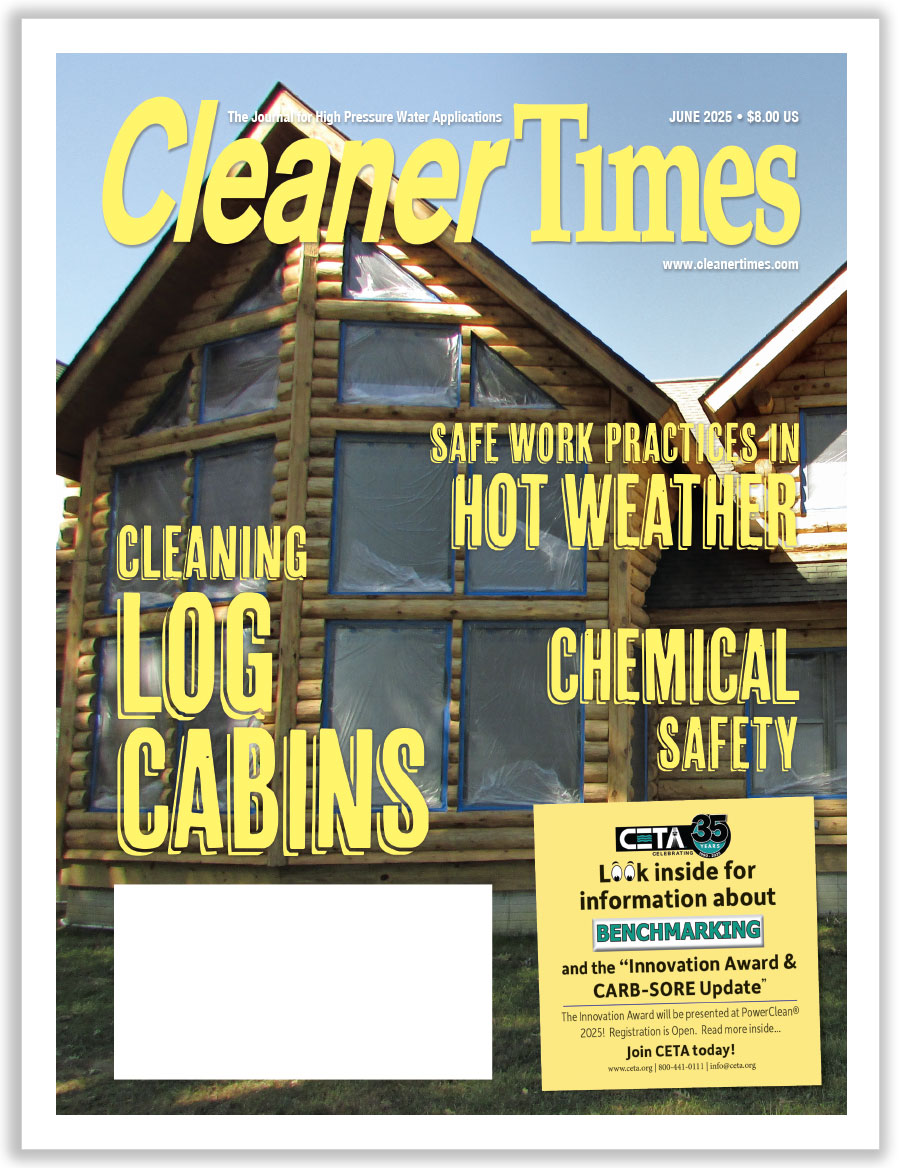
Optimistic About the Future
2019 and Beyond
By Diane M. Calabrese / Published December 2018

Rosy. Bright. Promising. Choose any adjective. The national economy looks good.
As we write in October 2018, the national unemployment rate is 3.7 percent, which equates with full employment according to many economists. Average hourly earnings are $27.24, an increase of 36 cents per hour since April, and productivity is close to twice as high as it was during the same interval in 2017.
The Congressional Budget Office (CBO) predicts that 2018 will show a growth of real gross domestic product (GDP) at 3.1 percent overall. Then, GDP growth will slow to 2.4 percent in 2019 and slow more in successive years.
In the second quarter of 2018, the GDP growth reached 4.1 percent. The CBO predicts future growth will be much lower because the pent-up need for goods and services and other factors that powered the growth in that quarter will have moderated.
Each year, the CBO issues a report on the economy that looks ahead 10 years. Lower growth will plateau from 2023 to 2038 at 1.7 percent, according to the CBO projection.
With concern about rising—or quickly rising—interest rates often expressed, the CBO is more sanguine. It does not expect a fast or steep rise over the next 10 years.
Business planning benefits from attention to analyses completed by experts such as those at the CBO. Yet just relying on predictions without the context of immersion in an industry can mislead owners as they plan for 2019 and beyond. (Just consider how many dot-coms and apps have shown exponential growth, only to collapse precipitously.)
Three established members of our industry—each a pragmatic optimist—tell us here how they are preparing for 2019 and beyond. Notice that as they ready their businesses for the future, they do so with careful evaluation of what has worked in the past and is working in the present. Reinventing the wheel is a big time-waster.
Change and Context
“My first year in the industry started back in 1978 before the internet, fax machines, cell phones, and pagers,” says Jeffrey K. Burros, the vice president sales at Alkota Cleaning Systems Inc. in Alcester, SD. “I was an outside salesman for a small company in Los Angeles, CA, that distributed high-pressure pumps and accessories.”
Forty years later, much has changed, to be sure. “The market is very different now with the new information age and social media,” says Burros.
But there’s good in the transition, such as the way customers can learn about options before they choose solutions. Burros explains, “In 2019 more technology will be at everyone’s fingertips, making the consumers more knowledgeable about their purchases.”
Burros’ view of the next year mirrors that of the CBO forecasters. “I am very optimistic going forward for 2019, with our top priorities being growing sales, cutting costs, addressing a workforce shortage, and seeking new markets.”
A strong economy and growth within the industry coupled with a favorable business climate are among the conditions Burros expects next year. He does, however, have a bit of wariness about the ongoing embrace by consumers of less-than-enduring goods.
“My one concern for the industry for 2019 and beyond is losing more U.S.-based manufacturers of high-pressure cleaning equipment to offshore companies using cheap components and labor making equipment with a shorter lifespan,” explains Burros. “We seem to have become more of a disposable society. If it breaks, throw it away and buy another.”
Also concerned about trade tariffs, new sales, and service taxes, Burros is nevertheless confident that companies that take the time to plan can meet the challenge of any changes. “Strategic planning remains critical for any manufacturer or supplier,” he says.
Challenges change, but the effort it takes to keep pace with developments in the economy and the industry does not change. Burros sees the industry moving in a very positive direction.
“I believe the industry will change for the better with additional safety requirements, such as ISO (Inter-national Standards Organization), ETL (Intertek Testing Service), and UL (Underwriters Laboratories) standards, along with education for consumers through social media and web pages,” says Burros.
Obstacles vs. Opportunities
“I am very optimistic about the future because of the growth of small distributors, manufacturers, and internet companies, and the desire of all these folks to be successful in spite of the obstacles placed in front of them,” says Dave Hildebrand, vice president for Barens Inc. in Seneca, PA.
Seeing an obstacle as an opportunity to prove it can be done—a bypass, a circumvention, an outwitting—is something that unites established companies. Throwing up one’s hands in despair or just giving up is never an option. In the experience of Hildebrand’s company, tariffs have imposed an obstacle that has turned into an opportunity for some of the company’s domestic vendors.
“Our company’s first year of operation was 1994,” says Hildebrand. “In that year, most of the products sold in the industry came from Italy, Germany, and the United States. Since that time, the Chinese and other Asian nations have become major suppliers to the industry and allowed companies such as ours to become importers. Whether this is good for the industry is still an open question, as the lower cost of goods from those areas has caused a major change in pricing and profit.
“Unfortunately, I see this continuing in 2019 unless the tariffs imposed by the United States continue through next year,” continues Hildebrand. “If they hold, this will open the window for domestic suppliers to increase sales to companies such as ours. We have already found some local, small machine shops to produce some of our products at prices competitive with the Chinese prices.”
The growth of selling through the internet is an undeniable change since 1994, says Hildebrand. “This has allowed individuals to set up companies and sell products all over the world, and unless regulations cause a change, it will continue to be a major factor.”
There are some “red flags” on the horizon, says Hildebrand. New regulations are among them. He cites California’s Proposition 65 as a good example of a regulation that adds significant costs to doing business with its requirement that any product sold in the Golden State must carry warning labels if any of its components have been linked to cancer or birth defects.
“There is a process to have products tested for content to get relief from Prop 65, but the cost is prohibitive,” says Hildebrand. Moreover, modifications in regulations keep the goal posts moving.
Another flag that concerns Hildebrand is the 2018 ruling by the U.S. Supreme Court on sales taxes. State X can now require an out-of-state (say state Y) retailer to collect sales taxes for any purchase by a state X resident.
Prop 65 and sales tax collection (and disbursement to respective states) “will greatly change the way we do business,” says Hildebrand. “And who knows what else may be out there…” The way forward is to be ready for anything.
Benchmarks and Banks
Not knowing where you are can make it very difficult to plot a path to get to another place. It’s true on the road. It’s true in business.
Steadying a business with surety for 2019 demands a realistic appraisal of the state of the business. Roy G. Chappell, CEO of Chappell Supply and Equipment in Oklahoma City, OK, is a firm advocate of benchmarking. Regular assessment of the sales per year, profits, and inventory turns for a business obtained through benchmarking provides a powerful tool for planning for 2019 and beyond.
A benchmarking profile also serves as a great tool for securing and maintaining credit. “When we started looking at land to build on, the first thing the banker asked for was the last three years of financials,” says Chappell. “With that, we also gave the banker three years of benchmarking reports. This made the process of getting a construction loan much easier. The bank could see how we stacked up in our industry.”
Never underestimate the importance of a line of credit (even in a good economy), says Chappell. “Here in
the Midwest, we see a four to six percent drop in business in August and September. By having a line of credit with the banker, it gives us the opportunity to buy equipment and build up inventory for the increase in sales starting in October.”
Always put a premium on a good relationship with a banker, says Chappell. A trusted banking relationship can make it easier to renegotiate loan terms, such as getting a new interest rate when rates drop. It can lead also to new business and industry contacts, as well as advice on local business climate and approaches. (Note: See “Forming a Good Banking Relationship” on page 22 for more on this topic.)
“My dad always said, ‘Take care of your banker, and he will take care of you,’” says Chappell. “Your banker is a great source of good employees—we have even hired a couple of employees away from our bank over the years.”
2019 and beyond? Determination and planning beat uncertainty.





